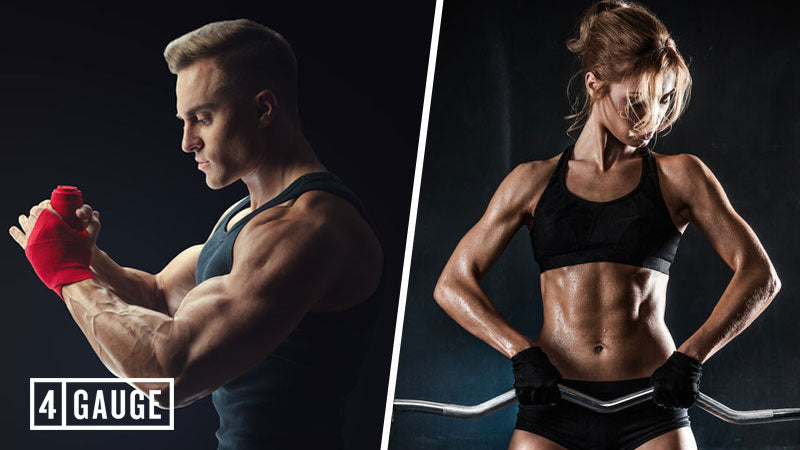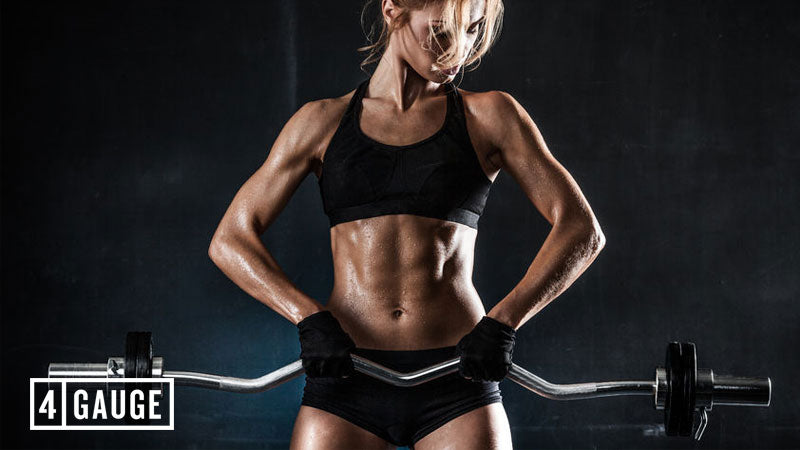Flash Sale!
Buy 3 Bottles of 4 Gauge ELITE,
Get 1 FREE + a FREE Shaker Bottle!
This store requires javascript to be enabled for some features to work correctly.

There’s no better feeling than a skin-splitting, shirt-shredding muscle pump. Here’s how to maximize your pump with the right training and nutrition.
Blood is gushing into your arms as you blast out yet another set of arm curls. Your forearms are swelling in size and you can literally feel them engorging in oxygen and nutrients.
Your physique has never looked so good and your confidence is sky high.
You chase that rock hard, vascular appearance and try to amplify your gains to boost strength, stamina and muscle growth.
But what exactly is a muscle pump and why does it feel so good?
In this article we tell you everything you need to know about muscle pumps and how to train for them…
Runners have their ‘high’ and athletes have their medals. For bodybuilders and strength enthusiasts it’s all about the muscle pump.
Arnold once said that “the pump is better than sex”.
And while he’s exaggerating slightly, he’s not far off the mark.
There’s just something about that swollen, solid, vascular look that gives you unrelenting swagger and strength.
But if you’ve ever noticed, it’s not something you achieve every workout. In fact, without the right training approach and nutrient support, you probably won’t get anywhere near the pump.
Instead, you just look flat, weak and depleted.
You’re what’s known as a ‘no pump chump’.
In nerd talk, the pump is known as hyperemia. It refers to an excess of blood volume in the vessels supplying your muscle, or any other part of your body.
Your vascular system is responsible for transporting nutrients and oxygen to the cells in your body, as and when they need it. It’s like a super highway communication site of vessels that are driven by your heart.
When a muscle contracts it actually stops blood from entering it because of vessel constriction. But when it relaxes, blood is allowed to enter the muscle and bathe the fibers and cells involved.
We call this a skeletal muscle pump.
When you continuously contract and relax a muscle (through a high rep set for example) you trigger an increase in blood flow to the muscle. Your body realizes that you need more nutrients in order to keep the muscle involved working.
So it gives it what it needs.
And more blood means more nutrients.
In order to deliver more blood to your muscles, your heart might start to beat more regularly. It also increases stroke volume too, which is the volume of blood spurted into your bloodstream from your heart each beat.
Your vascular system realizes that there’s a tidal wave of blood rushing towards the muscle, so acts as fast as possible to widen your arteries and let it pass through.
It does this with a compound called nitric oxide.
The physiology of how this all happens is pretty complex, but in short, nitric oxide agitates cells in your blood vessels called endothelial cells, and this signals the inner lining of your arteries to expand – a process called vasodilation.
Elevated heart rate and stroke volume combined with vasodilation means more fuel for your muscles.
And a great muscle pump.

Key Point: The increase in blood pushing against the now expanded blood vessels means they get engorged with blood. The result is one hell of a monstrous muscle pump.
You can’t just rock up to the gym, throw a few weights around and expect to achieve a brutal muscle pump.
You have to bring strategy and planning with you.
The first thing you have to do is increase blood flow. And the best way to do that is to hit high volume sets with minimal recovery.
By completing a high number of reps, you force more and more blood to the working muscles.
You can take this one step further by keeping your rest times low so that you limit blood exiting the muscle.
Slowing down the lowering phase of each rep (aim for 3-4 seconds) enhances the skeletal muscle pump.
And finally, advanced lifting protocols that aim to keep a huge amount of blood packed into the muscle for an extended period of time will soon have you screaming at the intensity of your muscle pump.
Favorite pump systems used by the pros include drop sets, blood flow restriction training and agonist supersets.
Training tips to maximize your muscle pump:
Back in the day, sport scientists thought you needed to lift heavy to grow muscle. But as more and more research is coming out, we know now that intense muscle pumps can also trigger significant growth.
Your muscle pump might only be temporary, but the effects are long lasting for stimulating mass.
During the time where nitric oxide is elevated and blood is packed into the muscle, a cascade of hormonal changes take place, resulting in an effective anabolic environment for muscle fiber growth.
Firstly, an increase in blood flow means more growth factor hormones being delivered where you need them.
Secondly, there are mechanical changes that take place at the cellular level too. As blood and fluid is shuttled into the cell membrane, it stretches. And because the cell sees this as a threat to its structural integrity, it grows back bigger to protect itself.
Now don’t get us wrong.
You do have to include heavy lifting in your program to optimize muscle growth; but muscle pump workouts are a valuable weapon in your war against skinny arms and weak legs.

Getting an aggressive muscle pump isn’t just about smashing your way through set after set of high-volume curls and presses.
Nutrition is also a big part of maximizing your muscle pumps.
This is how to use nutrition to get a better pump.
Trying to create a muscle pump without carbs is like trying to achieve a high jump while on your knees.
Taking in plenty of carbs before your workout not only gives you the energy to train hard during your sessions, but also to achieve an insane pump.
A lack of carbs leaves you looking flat and depleted.
But glycogen also makes your muscles look full and strong.
When you eat carbs, your body breaks it down into glucose and then stores it as glycogen in your muscles and liver. It pulls water into your muscle cells like a sponge, giving you a firm and high-muscle volume look.
So take advantage of it.
Blood travels in fluid called plasma.
Without water to create that plasma, you’ll not be able to achieve the blood volume you need to deliver huge pumps that fill your vessels with nutrients.
Aim to drink 1-2 liters of water each day, but also eat plenty of watery foods such as fruit and vegetables.
Drinking before and during your workout will optimize the effects.
Premium pre workout supplements such as 4 Gauge not only give you the energy to ramp up your strength, power, stamina and endurance; it also delivers high-quality and long-lasting muscle pumps.
Citrulline malate is a nutrient well known for its muscle pumping properties.
It converts into L-arginine in your kidneys and then stimulates nitric oxide production and vasodilation. It has a high absorption rate and even helps to regulate how your body uses energy via the tricarboxylic cycle.
And one of the most popular performance-enhancing compounds found in red beet – nitrates – also has a massive effect on muscle pumps.
In clinical trials, red beet supplementation has been shown to increase time-to-fatigue at high intensity, reduce energy cost and improve endurance.
Muscle pumps occur because you force more blood into your muscles. As your heart pumps more blood and your arteries relax, more blood volume and nutrients reach your working muscles to be used for fuel.
The best type of training for muscle pumps is high-volume, low rest training. The more reps you can complete in a given time period, the more intense your pump will be.
4 Gauge is an exhaustively researched, all-natural pre workout designed to rip the lid off your gym sessions, sports games or workouts.
Packed with performance-enhancing nutrients such as caffeine, L-theanine and creatine, 4 Gauge will take your training to a completely new level.
